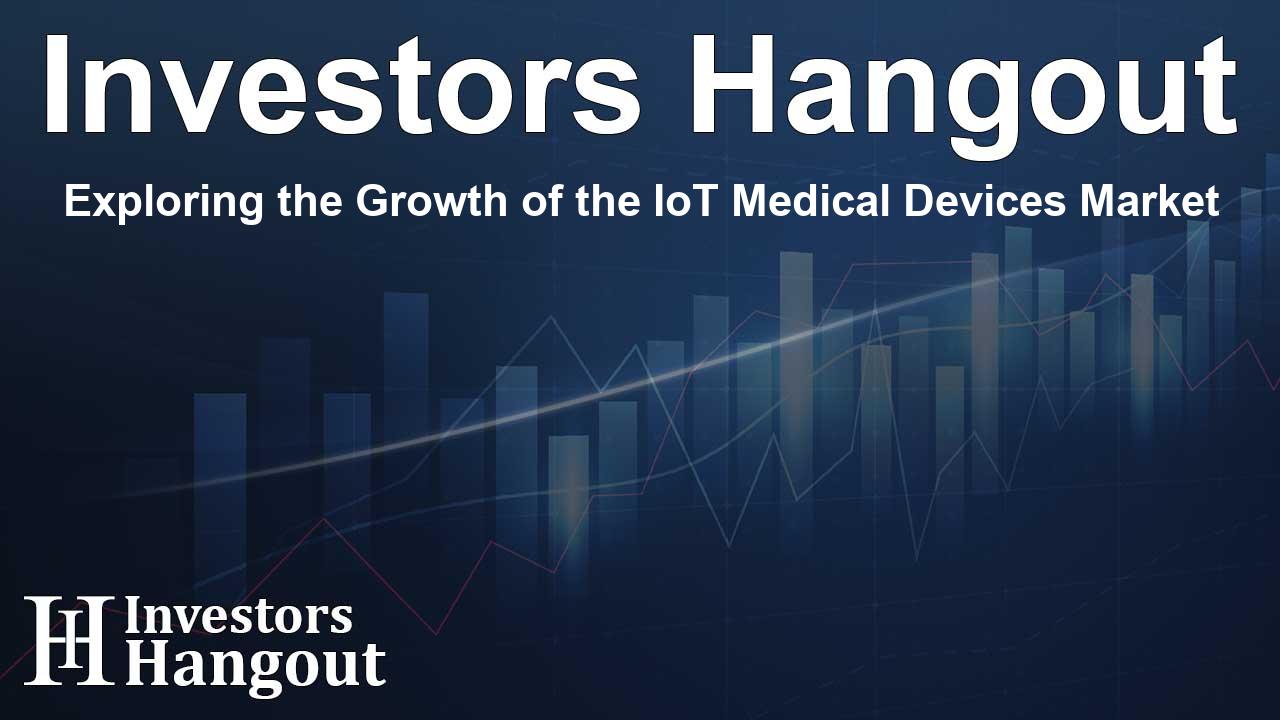Exploring the Growth of the IoT Medical Devices Market

Trends in the IoT Medical Devices Market
The IoT Medical Devices market is skyrocketing, with expectations to reach an impressive USD 503.6 billion by 2032, a significant jump from USD 41.4 billion in 2023. This remarkable growth, anticipated at a CAGR of 32.0%, is largely driven by continuous advancements in healthcare technology. As connected medical devices become more prevalent, they offer real-time health monitoring and streamline data management effectively.
The Influence of Technology Advancements
The rapid growth of the IoT Medical Devices market hinges on the increased integration of IoT technology into healthcare settings. This trend is revolutionizing patient care by allowing for ongoing health tracking and ultimately leading to better health outcomes. Additionally, the rise of telemedicine highlights the acceptance and necessity for remote patient management tools, accentuating the move toward more accessible healthcare options.
The Impact of Chronic Diseases on Market Expansion
A key factor propelling the market's growth is the rising number of chronic diseases. As more people contend with conditions like diabetes and heart disease, healthcare providers are actively seeking out efficient monitoring solutions. Innovative IoT medical devices, equipped with cutting-edge technology, are now indispensable tools for both patients and healthcare practitioners.
Investment Landscape in the IoT Medical Devices Market
Substantial investments from both technology companies and healthcare providers are critical to advancing the capabilities of these devices. This investment climate encourages innovation, creating a broad array of connected healthcare solutions. The dynamic nature of this market presents numerous growth opportunities and strategic investment possibilities.
Market Segmentation of IoT Medical Devices
The IoT Medical Devices market is organized into various segments based on components, technologies, applications, and end-users. Here's a closer look:
By Component
- Medical Devices
- System and Software
- Services
By Technology
- Cellular
- Wi-Fi
- Bluetooth
- LPWANs
- Zigbee
- RFID
Applications Shaping Market Trends
The push towards telemedicine is reshaping the healthcare scene, leading to its notable share in the IoT Medical Devices market. There's growing demand for remote patient monitoring solutions, which further boosts the relevance of IoT technologies.
Implementation in Hospitals and Clinics
In 2023, hospitals and clinical settings represented the largest segment, holding 43.2% of the market share, largely driven by the operational improvements offered by IoT solutions. This segment continues to grow, as IoT technologies enhance patient record management and enable real-time communication, ultimately streamlining treatment processes.
Regional Market Growth Insights
North America stands out as a leader in the IoT Medical Devices market, primarily due to its advanced healthcare infrastructure. Major companies in this region, including Apple Inc. and Medtronic, are key players in advancing cutting-edge IoT medical technologies.
Growth in the Asia-Pacific Market
Meanwhile, the Asia-Pacific market is gaining momentum, driven by increasing healthcare demands and investment in innovative technology solutions. Significant developments in countries like China and India illustrate the region’s rapidly growing trajectory.
Recent Innovations Shaping the Future
The year 2024 witnessed exciting innovations such as the launch of new wearable devices from companies like Philips aimed at supporting ongoing heart health monitoring. Additionally, Abbott introduced smart glucose monitoring systems that are intended to improve diabetes management.
Key Conclusions and Takeaways
- The IoT Medical Devices market is on a positive growth path, propelled by technological innovations and rising healthcare requirements.
- North America maintains its leadership position due to its robust healthcare infrastructure and adoption rates.
- Growth in the Asia-Pacific region is fueled by significant healthcare investments and a growing preference for IoT technologies.
Frequently Asked Questions
What is the expected market size for IoT Medical Devices by 2032?
The IoT Medical Devices market is projected to reach USD 503.6 billion by 2032.
What is driving the growth of the IoT Medical Devices market?
The growth is driven by technological advancements and increasing healthcare demands, particularly for chronic disease management.
Which region leads the IoT Medical Devices market?
North America leads the market, attributed to its advanced healthcare infrastructure and high technology adoption rates.
What are the key segments in the IoT Medical Devices market?
Key segments include components such as medical devices and software, and technologies like cellular and Wi-Fi.
How is telemedicine impacting the market?
Telemedicine is significantly increasing the demand for IoT solutions, providing essential remote patient monitoring capabilities.
About The Author
Contact Caleb Price privately here. Or send an email with ATTN: Caleb Price as the subject to contact@investorshangout.com.
About Investors Hangout
Investors Hangout is a leading online stock forum for financial discussion and learning, offering a wide range of free tools and resources. It draws in traders of all levels, who exchange market knowledge, investigate trading tactics, and keep an eye on industry developments in real time. Featuring financial articles, stock message boards, quotes, charts, company profiles, and live news updates. Through cooperative learning and a wealth of informational resources, it helps users from novices creating their first portfolios to experts honing their techniques. Join Investors Hangout today: https://investorshangout.com/
The content of this article is based on factual, publicly available information and does not represent legal, financial, or investment advice. Investors Hangout does not offer financial advice, and the author is not a licensed financial advisor. Consult a qualified advisor before making any financial or investment decisions based on this article. This article should not be considered advice to purchase, sell, or hold any securities or other investments. If any of the material provided here is inaccurate, please contact us for corrections.
